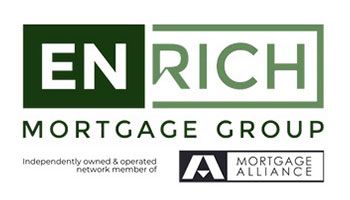FHSA And HBP: Setting Realistic Savings Goals and Developing a Savings Plan With an FHSA and How the Home Buyers’ Plan Works: Step-by-Step Process
When it comes to saving for your first home in Canada, understanding how to set realistic savings goals and developing a solid savings plan is crucial. In this blog, I will explore the First Home Savings Account (FHSA) and the Home Buyers’ Plan (HBP). I will guide you through the process of setting achievable savings goals using an FHSA and provide a step-by-step explanation of how the HBP works, allowing you to navigate the path to homeownership with confidence.
Setting Realistic Savings Goals with an FHSA
When it comes to setting realistic savings goals, my personalized approach starts with understanding your unique financial situation and homeownership aspirations. I at Keith Uthe Demystifying Mortgages will work closely with you to assess your budget, income, and other financial factors to determine a suitable savings target. Setting a realistic goal ensures that you don’t feel overwhelmed by the savings process, making it more manageable and sustainable.
The FHSA is an excellent tool to help you reach your savings objectives efficiently. With its tax advantages and potential government matching contributions, your savings can grow at an accelerated pace, bringing you closer to your down payment goal. I will demystify the intricacies of the FHSA, empowering you with the knowledge needed to make informed decisions about your savings strategy.
Here’s a step-by-step guide to help you chart your path towards achieving your homeownership dreams
- Evaluate Your Finances: Start by assessing your current financial situation. Take a close look at your income, expenses, and any existing savings or investments. Understanding your financial picture will give you a clear idea of how much you can realistically set aside for your FHSA.
- Determine Your Homeownership Timeline: Consider when you plan to buy your home. Are you looking to purchase within the next year, or is it a longer-term goal? Your homeownership timeline will influence the amount you need to save each month to reach your goal.
- Research the FHSA Program: Familiarize yourself with the details of the FHSA program. Understand the contribution limits, tax advantages, and government matching contributions available to you. Knowing the rules and benefits will help you make the most of your FHSA.
- Set a Specific Savings Target: Based on your financial evaluation and homeownership timeline, set a specific savings target. Your goal should be achievable yet challenging enough to keep you motivated. Aim to save a certain percentage of your desired down payment amount.
- Create a Budget: Develop a budget that aligns with your savings target. Identify areas where you can cut back on expenses and redirect those funds to your FHSA. Staying disciplined with your budget will accelerate your savings progress.
- Automate Your Savings: Make saving easier by automating your contributions to your FHSA. Set up automatic transfers from your bank account to your FHSA on a regular basis. This ensures that you consistently save without having to think about it.
- Utilize Windfalls and Bonuses: Whenever you receive unexpected windfalls, such as tax refunds or work bonuses, consider putting a portion of them into your FHSA. These extra funds can give your savings a significant boost.
- Monitor Your Progress: Regularly review your savings progress against your set goal. Celebrate your milestones along the way to keep your motivation high. If necessary, reassess your budget and savings strategy to stay on track.
- Seek Professional Advice: If you’re unsure about how to optimize your FHSA savings, seek advice from a qualified financial advisor or mortgage expert. They can provide personalized insights and strategies to help you reach your homeownership goal faster.
- Stay Committed: Achieving your homeownership dreams with an FHSA requires dedication and commitment. Keep your eyes on the prize, and remember that every dollar you save brings you closer to owning your dream home.
Understanding the Home Buyers’ Plan (HBP)
The Home Buyers’ Plan is a government program designed to assist first-time homebuyers by allowing them to withdraw funds from their Registered Retirement Savings Plan (RRSP) tax-free for the purpose of financing their home purchase. This incredible opportunity means that you can access your hard-earned savings without incurring tax penalties, providing you with a flexible and efficient way to fund your dream home.
Here’s a step-by-step process of how The Home Buyers’ Plan (HBP) works
- Determine Eligibility: Ensure you meet the eligibility criteria for the HBP. To qualify, you must be considered a first-time homebuyer, meaning you haven’t owned a home as your principal residence in the last four years. You must also have a valid written agreement to buy or build a qualifying home.Assess RRSP Eligibility: Confirm that you have funds available in your Registered Retirement Savings Plan (RRSP). The HBP allows you to withdraw up to $35,000 from your RRSP for your home purchase. If you’re purchasing the property with your spouse, both of you can withdraw up to $35,000 each, totaling $70,000.
- Complete HBP Request Form: Obtain the Home Buyers’ Plan (HBP) request form from the Canada Revenue Agency (CRA) website or your financial institution. Fill out the form accurately, providing the necessary information, including the amount you intend to withdraw from your RRSP.
- Submit the Form: Submit the completed HBP request form to the CRA. They will review the application and, if approved, will issue you an HBP withdrawal slip, which indicates the amount you can withdraw from your RRSP tax-free.
- Withdraw Funds: You can now withdraw the approved amount from your RRSP. Keep in mind that you must withdraw the funds within thirty days after taking possession of your new home. The withdrawn amount will not be included in your taxable income for that year.
- Repay the Withdrawal: The HBP requires you to repay the withdrawn amount back into your RRSP over a period of fifteen years, starting the second calendar year after your withdrawal. Each year, you must repay at least 1/15th of the total amount withdrawn. If you don’t repay the minimum amount in any given year, it will be considered taxable income for that year.
Step-by-Step Process: Using FHSA and HBP Together
Combining an FHSA with the Home Buyers’ Plan can optimize your savings strategy and expedite your path to homeownership. By combining the FHSA and HBP strategically, you can enhance your purchasing power and achieve your homeownership or refinancing goals more effectively.
Step 1: Evaluate Your Financial Situation: Start by assessing your financial picture, including your RRSP savings, current FHSA contributions, and homeownership goals. Understanding your finances will help you determine how much you can leverage from both the FHSA and HBP to fund your home purchase or refinance.
Step 2: Check Eligibility for Both Programs: Ensure you meet the eligibility criteria for both the FHSA and HBP. Confirm that you are a first-time homebuyer and that your RRSP savings are eligible for withdrawal under the HBP.
Step 3: Set Realistic Savings Goals: Determine the total amount you need for your down payment or refinance. Set realistic savings goals for your FHSA contributions and HBP withdrawals. Keith Uthe Demystifying Mortgages can help you tailor a strategy that aligns with your financial capacity and homeownership timeline.
Step 4: Maximize FHSA Contributions: Take advantage of the tax advantages and government matching contributions offered by the FHSA. Regularly contribute to your FHSA to make the most of this valuable savings opportunity.
Step 5: Utilize HBP Withdrawals: When you’re ready to make your home purchase or refinance, withdraw the approved amount from your RRSP tax-free using the HBP. This additional funding, coupled with your FHSA savings, can provide a significant boost to your down payment or refinancing efforts.
Step 6: Repay HBP Withdrawals: Keep in mind that you must repay the HBP withdrawals back into your RRSP over a 15-year period. Be sure to factor this into your long-term financial plan.
Step 7: Work with Experienced Advisors: Partner with experts like Keith Uthe Demystifying Mortgages to navigate the complexities of using the FHSA and HBP together. I will guide you through the process, ensuring you make the most of these beneficial programs while staying on track with your financial goals.
Setting realistic savings goals and understanding the Home Buyers’ Plan (HBP) are essential components of your journey to homeownership in Canada. My blog has equipped you with the knowledge and guidance needed to develop a robust savings plan using the First Home Savings Account (FHSA) and navigate the Home Buyers’ Plan effectively. At Keith Uthe Demystifying Mortgages, I specialize in helping home buyers like you overcome challenges and secure their dream homes.
To learn more about the services I offer, please click here. To get in touch with me, please click here or give me a call at (403) 614-8843.
Recent Posts





Contact INformation
Phone: (403) 614-8843
Email: keith@enrichmortgage.ca
Address: 101, 6420 6A Street SE Calgary, AB T2H 2B7
Business HOurs
Monday to Friday: 9:00 AM to 6:00 PM
Saturday: 10:00 AM to 2:00 PM
Sunday: Closed
Enrich Mortgage Group
